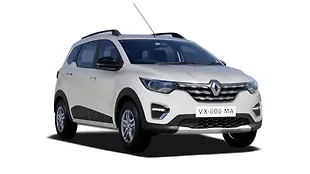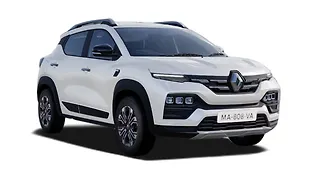Introduction
Budget hatchbacks are the bread and butter for all mainstream car brands in India. So much so that that our country’s biggest carmaker Maruti Suzuki has not one but three budget models for the masses. There’s the evergreen Alto and the Wagon R leading the sales charts but if you are someone who is willing to go beyond the traditional hatchback form, Maruti also has the S-Presso which is sold as a mini crossover. Renault India also has a similar thing going on with the Kwid which has been in the market long enough to prove its mettle. So how do these mini crossovers stack up against each other?

Performance

For starters, there is a considerable difference in performance between these hatchbacks. Both the S-Presso and the Kwid come with a 1-litre, 3-cylinder petrol engine but there are differences in the way these cars perform on the road. The Maruti’s 1-litre engine makes 67bhp of power and 90Nm of torque and it delivers both in a far smoother manner than the Renault’s engine. The Kwid’s engine, in fact, is quite jerky in its power delivery and overall it isn’t as refined as the other engine.

In terms of pure numbers, the S-Presso is noticeably peppier around town and feels more powerful than what the engine specs suggest. In our performance tests for the AMT versions of both vehicles, it registered a 0-60kmph time of 6.49 seconds compared to the Kwid which took 8.42 seconds to complete the same run. 0-100 meanwhile took 15.37 seconds for the S-Presso whereas the Kwid was a little slower at 18.46 seconds.
In terms of weight, they are proper lightweight cars and evenly matched with the S-Presso weighing 770kg and the Kwid 760kg. So how is the S-Presso that much quicker than the Kwid? Well if you take look at how early peak torque comes in on the S-Presso compared to the Kwid then it all makes sense. In fact, the Maruti makes 90Nm at 3,500rpm whereas the Kwid needs another 1,000revs to make peak torque. This is evident in roll-on acceleration wherein the S-Presso responds better to throttle inputs and pulls harder in the mid-range. As a result, it put up a 9.48 seconds time against the Kwid's 10.34 seconds in the 20-80kmph in kick-down. Even in the 40-100kmph run, the S-Presso managed to clock 11.12 seconds, while the Kwid was a little slower at 14.07 seconds.

Fuel Efficiency

What’s interesting is that the Maruti S-Presso is not only outright quicker, more responsive through the gears but also overall, more fuel efficient than the Renault Kwid although there isn’t a drastic difference in the city figures. The S-Presso will give you 13.77kms per litre in the city whereas you will get slightly less in the Kwid as we managed 12.3kms to the litre. On the highway our fuel efficiency test revealed a bigger difference than expected. The S-Presso delivered 20.15kms per litre and the Kwid couldn’t do any better than 17.7kms per litre. The tank size on both is 35 litres each which is appropriate given their size but because the S-Presso is that much more efficient, you will be able to drive at least 50-60kms further on a tankful.

Interior Space
Front

| Front Row | Maruti Suzuki S-Presso | Renault Kwid |
| Legroom (max/min) | 840/610mm | 840/680mm |
| Headroom (max/min) | 950mm | 940mm |
| Shoulder Room | 1220mm | 1150mm |
| Backrest Height | 590mm | 550mm |
Budget car buyers do care about the exterior design and the features on offer but interior space is something that’s generally on top of their priority list. After all, the cabin is where the users spend all their time while driving the car. Now the Kwid may be longer and wider than the S-Presso but it’s the latter that has more volume up front. This is down to Maruti exploiting the interior volume to the max. According to our tape measure, legroom in the front is similar on both although the Kwid has more room to offer when you slide the front seats all the way forward. Being a taller car, the S-Presso has better headroom but what’s surprising is that even though it’s narrower than the Kwid, it offers more shoulder room than the Kwid. The seat backrest is longer and more accommodating as well when you compare it to the Kwid.

Rear

| Second Row | Maruti Suzuki S-Presso | Renault Kwid |
| Legroom (max/min) | 900/660mm | 780/580mm |
| Ideal Legroom | 660mm | 640mm |
| Headroom | 910mm | 900mm |
| Shoulder Room | 1140mm | 1170mm |
| Seat Base Length | 440mm | 490mm |
| Backrest Height | 500mm | 510mm |
Things are a little different when you move to the rear. Sure, the S-Presso has more knee room and naturally, more headroom but overall the Kwid has better rear-seat comfort. The Kwid has more shoulder room and that’s really handy when you need to ferry more than two occupants at the back. More importantly, the rear bench itself is more accommodating that the S-Presso because you have a longer seat base and backrest, both of which are crucial and add up to overall comfort levels.

Boot

| Boot Space | Maruti Suzuki S-Presso | Renault Kwid |
| Length/Width/Height | 600/880/570mm | 680/950/530mm |
| Boot space capacity | 240 litres | 279 litres |
| Loading Lip Height | 750mm | 740mm |
The additional length and width of the Kwid over the S-Presso are apparent in the amount of boot space you get. The Renault’s boot, in fact, is noticeably bigger than the Maruti’s and the boot area itself is flat and nicely carved out. The loading height is also slightly lower than the S-Presso which makes the job of putting heavy items in the boot that much easier.

Features

The list of features on these cars is fairly long provided you buy the top-end variant. Power steering, front power windows and central locking are standard on top-end variants. Additionally, you also get ABS, dual airbags, manual AC, a digital instrument console and a touchscreen infotainment system as standard. There are some differences if you dig deeper into the spec sheet. For instance, the S-Presso gets steering mounted controls and internally adjustable mirrors as additional features over the Kwid. But then it also misses out on a lot considering the similarity in prices. You don’t get LED DRLs, rear view camera, power windows at the back and a rear armrest. The fact that all of these features are available on the top-spec Kwid makes it great value if you ask us.

Price
Now for the all-important prices, the S-Presso range starts at Rs 3.77 lakh for the standard base variant, going all the way to Rs 5.25 lakh for the VXI option CNG variant. There are fourteen variants in total on offer with the option of petrol only or petrol CNG. The AMT variants though do not come with the option of a factory fitted CNG kit. The Kwid, on the other hand, starts at Rs 3.18 lakh for the standard base variant with prices climbing to Rs 5.39 lakh for the Climber AMT Opt variant. Renault isn’t currently selling a CNG variant of the Kwid but you can get a special variant called Neotech edition which comes with dual-tone color options.
Verdict
Even though they are far from perfect, the Maruti Suzuki S-Presso and the Renault Kwid put up a strong case for themselves as budget offerings. They are both easy to drive and park, equally spacious and packed with plenty of features provided you get yourself a top-end variant. It’s just that one betters the other on parameters that are so crucial to budget car buyers. Of course we are talking about the S-Presso which is not only more fuel-efficient but also quicker and more responsive than the Renault Kwid. It also has the backing of India’s biggest carmaker and its enormous sales and service support. It may as well be a superior choice for many buyers but if you are after new-age looks, rear seat comfort and boot space then it’s the Renault Kwid that makes for a more rational buy of the two.
Pictures by Kaustubh Gandhi

![Renault Kwid [2019-2022] Image Renault Kwid [2019-2022] Image](https://imgd.aeplcdn.com/272x153/n/cw/ec/48543/kwid-exterior-right-front-three-quarter-18.jpeg?isig=0&q=80)

























